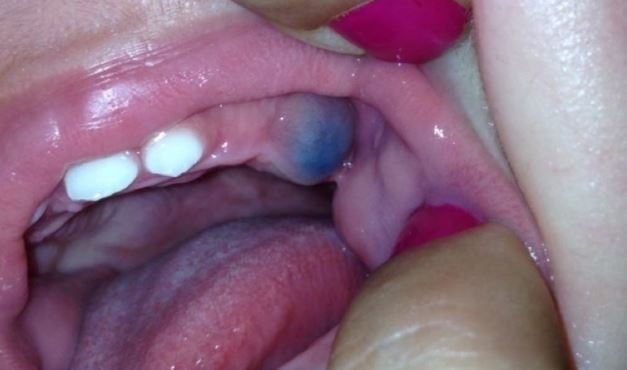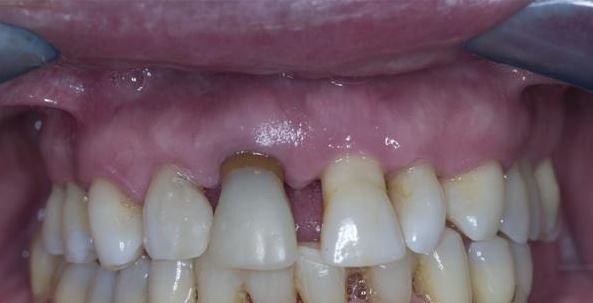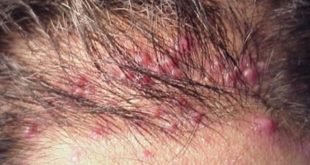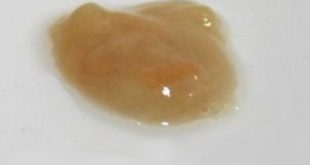According to Quantum Health, diseases that affect the gum such as periodontitisand gingivitis often cause purple gums. These diseases have been to result in the inflammation of your gums. When the gums are inflamed, the process will often lead to the discoloration of the gums, which is many times accompanied by mouth sores, shiny gums, bleeding as well as bad breath.
It is important to note that you can easily prevent gum disease by practicing good oral hygiene practices, as well as making sure that you make regular dental visits.
The two diseases that are known to cause purple gums are very different.
- Gingivitis is often categorized as a mild disease that affects the gums.
- Periodontitis on the other hand is categorized as a very severe gum disease.
Often, people with gingivitis end up having periodontitis when the condition is not taken care of immediately.
Quantum Health goes on to explain that bacteria that has collected between your teeth and your gum often cause gum diseases. The bacteria, once it has started collecting in this area start producing by-products that are toxic, and this is what inflames your gums.
According to the Center for Disease Control, at least seventy-five percent of all adults residing in the United States suffer from minor gingivitis, which if not controlled can lead to tooth loss.
On the other hand, periodontitis will cause your gums to recede, and this will lead to the formation of deep pockets in the area between your gums and teeth, and this provides more room for this bacterium to continue growing. A condition will normally lead to;
- loss of teeth
- altered mouth appearance
- chronic bad breath
Some of the aggravating factors for gum disease, which causes purple gums, include immune deficiencies, as well as taking a poor diet.
According to Quantum Health, it is important to make sure that a person gets regal dental cleanings, as the dentist will be able to clean areas that are unreachable using a toothbrush or when flossing the teeth. Additionally, your dentist can also remove the tar present in your mouth using a process known as debridement.
Why are my gums purple? Causes
Contents
Purple gums are often caused by a condition known as periodontitis, which means inflammation in the area surrounding your teeth. This is a serious infection that has been known to damage the bone and soft tissue that supports your teeth.
You should note that all periodontal diseases are categorized as infections that affect the periodontium.
It is the term used to refer to the tissues that are around your tooth, and which provide support to your tooth. When you have this disease, it means that the alveolar bone that is found around your teeth will be lost slowly and progressively. Failure to treat periodontitis eventually leads to;
- Loss of teeth
- Increased chances of getting a heart attack, stroke, as well as many health problems.
A bacterial plaque normally causes the periodontal disease—this is a sticky, colorless membrane, which develops over your teeth surface. Professionals in the dental industry are of the opinion that this disease can be prevented if a person practices proper dental hygiene.
Difference between gingivitis and periodontitis
Gingivitis always occurs before periodontitis. The condition refers to the inflammation of the gums, while periodontotis, is a gum disease, which is known to destroy the tissue and the bones surrounding the gums.
Initially, when a person has gingivitis, there is a bacterial plaque that will accumulate on the surface of the teeth, and this will cause the following;
- Gums to become red, inflamed.
- Teeth may start to bleed when you are brushing.
You will find that even though your gums are bothersome and irritated, you will not start to lose any teeth, just yet, even though the damage to your surrounding tissue as well as bones is irreversible. When gingivitis is not treated, it progresses to periodontitis, which leads to purple gums.
Once gingivitis has progressed to this condition, you will find this;
- Your bones and gums will start to pull away from your teeth, and this will lead to very large pockets being formed.
- The resulting space is where debris will start to collect between your teeth and the gums, and will end in an infection.
- If you are the one infected, your immune system will start attacking the bacteria, and this will cause it to spread to the area that is below your gum line.
- At this point, the connective tissues and the bones that are holding your tooth will start to break down as well—this is brought about by the toxins that are produced by the bacteria that is present in your mouth.
- Your teeth will then become loose and start falling out.
Simply put, periodontitis is associated with irreversible damage to the tissues supporting the teeth, while the same does not apply for gingivitis, even though they both cause purple gums.
Symptoms and signs of periodontitis
The signs and symptoms that are associated with periodontitis include:
- Bleeding when you are brushing your teeth
- Swollen gums
- Extra spaces will appear between your teeth
- Presence of a metallic taste in your mouth
- Appearance of pus between your gums and teeth
- Pain when you touch your gums
- Loose teeth
- When you bite something, the bite feels different as the teeth do not fit as they used to
Risk factors for periodontitis
Given that this condition caused purple gums, it is important to understand the risk factors, which include:
- Genetics—there are people who are more susceptible to this condition as compared to others
- AIDS
- Diabetes—people suffering from diabetes are more susceptible to this condition compared to those that do not have diabetes
- Cancer—the treatments prescribed to people with cancer can cause the appearance of peridontotis, which would then lead to purple gums
- Hormonal changes in women
- Smoking
Purple spots on your gums
Depending on the nature of the spots, purple spots on your gums can be an indication of a harmless or serious medical condition. There are oral cancers, which manifest in the form of dark spots when they are in their initial stages. You will find that gum disease can at times lead to the emergence or formation of dark spots on your gum and teeth.
It is therefore, recommended that you consult with your doctor as soon as you notice any spots start to form on your mouth.
Calculus
This is a hard and calcified deposit, which is formed from the oral debris, hardened dental plaque, minerals, as well as saliva. The hard residue has been known to form under or on your gum line, in the area between your gum tissue, as well as the teeth surface.
After formation, its color can range between yellow, dark brown, and purple. When these deposits are present on the gums, they can provide the appearance of spots on your gums, and are often an indication poor dental hygiene, which if not rectified could lead to gum disease.
It is recommended that you floss each day, remembering to follow the right flossing techniques, which assists in preventing the buildup of calculus. In case it is already present on your gum line, you should see your doctor as soon as possible. The dentist will assess the severity of the calculus and provide you with viable treatment options.
Amalgam tattoos
A person with crowns, dentures, and fillings is likely to develop amalgam tattoos. The amalgam tattoos are gray, black, or purple spots, which appear on the inner part of your mouth once small amalgam particles start to embed within your oral membranes.
Normally, the spots will remain the same size, and will have a regular, round, and flat-like appearance. Though the amalgam tattoos do not pose any danger to your health, you should realize that there are certain oral cancers, which when in their early stages resemble these amalgam tattoos—you must therefore make sure that any new discoloration or spots are examined as soon as possible.
Malignant melanoma
Of all the diseases that affect the mouth, melanoma is one of the most rare conditions, but when it attacks your mouth, it can be very fatal. Known as oral melanoma, it starts as a black spot inside your mouth. During the early days, it can resemble an amalgam tattoo.
However, as it starts to progress, it changes it colors to tan, dark, brown, purple, or black combined with gray or red shades. As it encompasses more of your mouth, its size will start to increase, and the shape will continue to change regularly as it continues growing.
Purple bumps
Purple bumps on your gums can be caused by conditions such as periapical abscesses or even mild gingivitis—both of which are known to form around the root of your teeth. Normally, gun infections are caused by;
- poor hygiene practices
- existing dental conditions
- tooth decay
Tooth decay
If you do not address tooth decay, the condition will continue to spread to the rest of the mouth through your tooth enamel, and it could end up affecting the teeth that are adjacent. When this decay reaches the inner part of your tooth, the nerves in your teeth will become infected as well.
Once the infection has started, it will attempt to drain, and this often causes the appearance of a bump or abscess near the root of your teeth—draining through your gum tissue. Often, the abscess will come and go, even though this condition is known to be permanent. However, your dentist can remove all the decay, and repair your teeth.
Infections from a gum disease
It is common for gums to appear as though they are infected, when they are in fact experiencing gingivitis symptoms or a mild gum disease. You will find that there will be small amounts of plaque that will congregate in the area around your gum lines, and will in the process deposit bacteria below your gums.
If this bacterium is not properly removed, your body will induce a swelling and bleeding response in the area that is infected. When the severe forms of gum disease have affected a person, you will find that these diseases will cause destruction to the supporting bone, and this may result in the loss of teeth.
Gums turning purple around tooth
When looking into purple gums, there is a chance that you will come across gums that are turning purple around the tooth area. It is important to note that gums can start changing color, and could become blue or purple in the area around your teeth, due to the influence of the hormones present in the body.
For instance, darkening of your gums when pregnant is considered normal and is not something that should worry you. However, there are times when it is recommended that you visit a doctor as soon as possible for evaluation, as the color change could be a sign that you have gingivitis. The condition has been known to occur when bacteria starts to collect between your gum line and teeth, and this leads to an infection.
You should have the gingivitis evaluated as it could progress to periodontitis if a proper evaluation is not performed, and medication prescribed to help keep it under control. Traditionally, gingivitis has been treated by paying better attention to the oral hygiene practices that a person is utilizing, including;
- ensuring that you floss and brush your teeth on a regular basis
- Deep cleaning your gum tissue will also help ensure that you do not get purple gums.
Baby gums swollen and purple
It is normal for many parents to become worried when they notice that their children have a bluish purple bump on their delicate gums. However, as a parent, you should realize that this is a fairly common development that is known as eruption hematoma or eruption cyst. Eruption cysts are known to occur when the baby’s tooth is making its final entry into the baby’s mouth from the bone.
The tooth is developed from a protective enclosure, which can start to leak, and this would allow fluids to start accumulating in the area between the teeth and the gums. In case an opposing tooth encounters the gums, it could cause food and fluids to accumulate between the gum and the teeth. When this happens, it causes a bruise to start forming in the gum tissue between the outer surface of the child’s gum and the tooth.
Depending on the total amount of blood that will accumulate in this eruption cyst, it could end up being a translucent color, dark red, brown, or bluish purple. Even though the eruption cysts are known to be unattractive and often cause the parents a lot of worry, these eruptions are known to be very painless.
How to get rid of purple gums
Traditionally, pink gums have always been considered to be healthy gums. For you to get rid of purple gums, and get healthy pink gums, it will be important to ensure that you take care of your gums in the same manner that you take care of your skin or hair. It is possible to get and maintain healthy pink gums by ensuring that you practice a standard dental hygiene schedule.
Brushing your teeth
Ensure you select the right toothpaste
It is normal to be tempted to skimp when it comes to toothpaste. However, if you want to improve the conditions of your gum, as well as your overall dental hygiene, you will need to ensure that you make the right choice when selecting your preferred toothpaste. Do not be afraid to pay a little extra, to get toothpaste that has been designed specifically for your type of gums.
Make use of a quality toothbrush
According to Dr. Axe, when buying toothbrush, you will need to ensure that you look for toothbrushes that have the American Dental Association approval seal on the package. When purchasing a toothbrush, there are many options that you need to weigh before making your purchase. For instance, should you use soft or hard bristles? Electric or regular toothbrush?
- When choosing a toothbrush, go for one that will not be difficult to maneuver around your mouth
- Do not go for brushes that have hard bristles, as they could end up damaging your gums, which could then result in gum recession. It is recommended that you choose soft or medium bristles
- Ensure the toothbrush has bristles with rounded tips
Practice proper brushing techniques
Just because you are brushing does not mean that you are brushing properly. Many people do not know that there is a good and way to brush their teeth
- You should make sure that the brush is at a forty-five degree angle to the gum line
- The stroke length must be roughly the length of a single tooth
- For the chewing surfaces found at the back of the teeth, you should always use circular strokes
- When brushing, brush gently, but be firm
- Do not apply too much pressure as this can strip your teeth of enamel, and this will cause the gums to start receding
- When cleaning the inner part of your mouth, you should use an up and down motion
- It is important that you always remember brushing the tongue surface
Brush before all your meals
Conventionally, you should brush at the end of your meal to allow you remove the food particles that could be present. However, many dentists recommend that you brush before taking your meals. Most dentists are concerned about the removal of plaque, not with the removal of food particles. As such, you will notice that brushing before taking your meals will help prevent gum and tooth damage, which may arise from brushing and spreading acids present in your food around the mouth.
- If you choose to adopt the practice of brushing before all your meals, do not forget to brush before going to bed as this is still important
- Even though brushing two times a day is the bare minimum, dentists recommend that you brush at least three a times for the best oral health possible.
Try and brush for a minimum of two minutes
Many people do not brush their teeth long enough to ensure that they protect the health of their teeth as well as that of their teeth. As such, when you are brushing, you need to ensure that you divide your mouth into four parts: upper right, upper left, bottom right, and bottom left.
When you start brushing, ensure you brush each portion for a minimum of thirty seconds. This will ensure that you are brushing as long as needed, and that you are hitting all the corners that are present in your mouth.
- Each tooth surface should be brushed for a minimum of ten times
- Do not be too aggressive when brushing the tooth surface
Do not brush too vigorously or too often
Choosing to brush your teeth more than three times in a single day, or being too aggressive, or applying too much pressure when brushing may damage the surface of your teeth, as well as the gums. Dentists use the term toothbrush abrasion to refer to this practice, which if not controlled could result in enamel deterioration as well as receding gums, which both lead to a person developing sensitive teeth.
- For people who use electric toothbrushes, they should let the toothbrush do all the work, without feeling the need to apply additional pressure on the brush
- Toothbrush abrasion is caused by the back and forth movements, which are accompanied by rapid movements and high pressure
Replace your toothbrush on a regular basis
With time, your toothbrush bristles will start to wear down, and this will mean that they will no longer be effective in cleaning your teeth. Additionally, they could also end up being home to numerous bacteria, which could cause purple gums.
There is therefore a need to make sure that you replace the toothbrush on a regular basis. Most dentists recommend ensuring that you replace the toothbrush at least once every four months, or when you notice the bristles begin to spread apart, as this will mean that each stroke will do more harm to your gums than good.
References;


